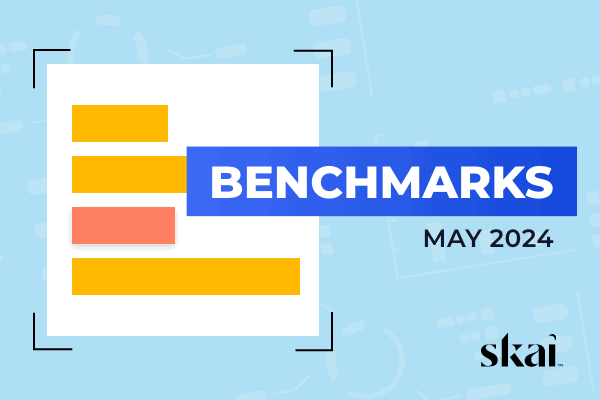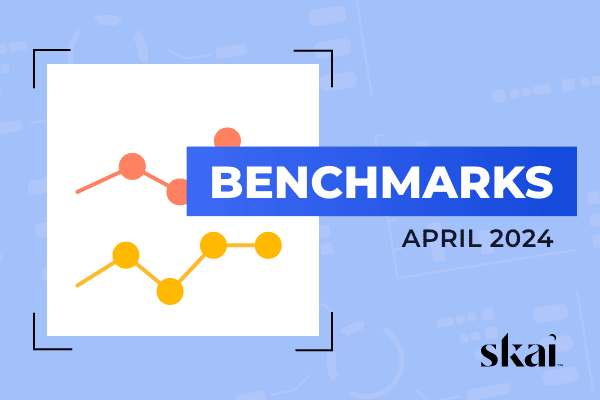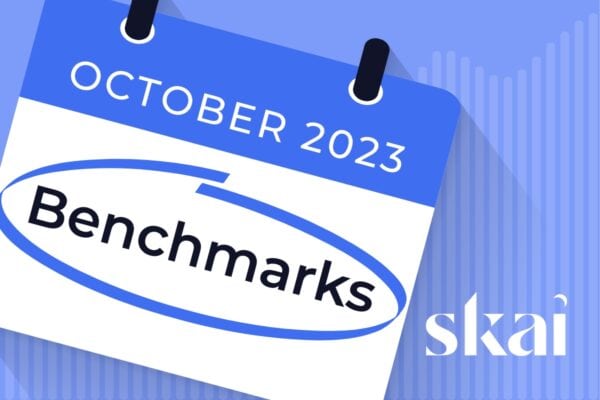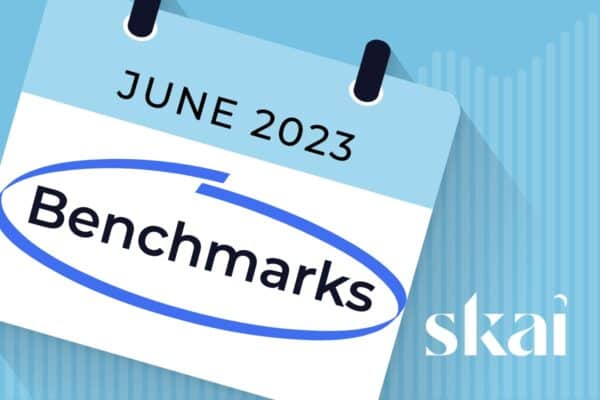Paid search, also known as pay-per-click (PPC) advertising, is a powerful digital marketing strategy that allows businesses to reach their target audience through search engine advertising. By displaying ads to users actively searching for relevant keywords, paid search can drive targeted traffic, generate leads, and boost conversions. However, to achieve maximum return on investment (ROI), it’s important to manage paid search campaigns effectively.
Setting Clear Goals and KPIs
Before launching a paid search strategy, it’s essential to define specific, measurable goals aligned with your business objectives. These goals could include increasing website traffic, generating leads, or driving online sales. Setting clear goals enables you to develop a targeted strategy and allocate your budget efficiently.
To measure the success of your paid search campaigns, establish key performance indicators (KPIs) such as:
- Click-Through Rate (CTR): The percentage of users who click on your ad after seeing it.
- Conversion Rate: The percentage of users who complete a desired action, such as making a purchase or filling out a form, after clicking on your ad.
- Cost Per Acquisition (CPA): The average cost of acquiring a new customer or lead through your paid search campaign.
Keyword Research and Selection
Conducting thorough keyword research is vital for the success of your paid search advertising campaigns. Start by identifying relevant keywords that your target audience is likely to use when searching for products or services like yours. Don’t forget to consider user intent when selecting keywords, as this can help you create more targeted and effective campaigns.
When selecting keywords for your campaigns, consider the following tips:
- Focus on Long-Tail Keywords: These are more specific, less competitive phrases that often indicate a higher level of user intent.
- Group-related Keywords: Organize your keywords into ad groups based on common themes or product categories to create targeted ad copy and landing pages.
- Include Negative Keywords: Exclude irrelevant search terms that may trigger your ads but are unlikely to result in conversions.
- Regularly Review and Update Your Keyword List: As your business and market evolve, ensure your keyword list stays relevant and aligned with your goals.
Thorough keyword research and selection form the foundation of successful paid search campaigns. Regularly reviewing and updating your keyword list ensures that your campaigns remain aligned with your goals and target audience as your business and market evolve.
Want to see how the right platform can drive better ROI? Learn about paid search management platforms here.
Ad Copy and Landing Page Optimization
Crafting compelling ad copy and designing effective landing pages are critical components of a successful paid search campaign. Your ad copy should capture the user’s attention, convey your unique value proposition, and encourage them to take action. Ensure that your ad copy is clear, concise, and relevant to the user’s search query, and always include a strong call-to-action (CTA).
When writing ad copy, follow these guidelines:
- Include your target keywords naturally
- Highlight your unique value proposition
- Use numbers, statistics, or social proof to build credibility
- Create a sense of urgency or scarcity
- Experiment with different ad formats, such as responsive search ads, to find what resonates with your audience
In addition to ad copy, optimizing your landing pages is crucial for converting visitors into customers. A well-designed landing page should be visually appealing, easy to navigate, and provide a seamless user experience. Ensure that your landing pages are relevant to the ad copy and search query and that they include a clear CTA above the fold.
To optimize your landing pages for conversions:
- Use a clear, concise headline that reinforces the ad copy
- Include relevant, high-quality images or videos
- Provide detailed information about your product or service
- Simplify your form fields and make them easy to complete
- Ensure your pages are mobile-friendly and fast-loading
- Build trust and credibility through customer testimonials, trust badges, or certifications
Skai’s Paid Search solution offers a unique feature called Generative AI Headlines. This innovative tool leverages machine learning to generate ad headlines that align with consumer intent, save time, and improve overall ad performance, setting it apart from other paid search platforms.
Bid Management Strategies
Bid management is the process of setting and optimizing bids for keywords or ad groups in a paid search ads campaign to achieve the best possible return on investment (ROI). Effective bid management involves finding the right balance between driving clicks and conversions while maintaining a profitable cost per acquisition (CPA).
There are several bidding strategies to consider, each with its own advantages and use cases:
- Manual CPC: You set the maximum cost-per-click for each keyword, giving you full control over your bids. This strategy is best for advertisers who want granular control over their bids and have the time to manage them actively.
- Enhanced CPC: Google automatically adjusts your bids based on the likelihood of a click resulting in a conversion. This strategy is ideal for advertisers who want to increase conversions while still maintaining control over their maximum CPC.
- Target CPA: You set a target cost-per-acquisition, and Google automatically adjusts your bids to achieve that target. This strategy is best for advertisers who have a specific CPA goal and want to maximize conversions within that target.
- Maximize Clicks: Google automatically sets your bids to help you get as many clicks as possible within your budget. This strategy is best for advertisers who want to drive high traffic to their websites and increase brand awareness.
The best bidding strategy depends on your goals, budget, and campaign performance. Regularly monitor and adjust your bids based on data to ensure you’re getting the best return on your investment. Consider factors such as keyword competition, ad relevance, and landing page experience when setting your bids, and don’t be afraid to experiment with different strategies to find what works best for your business.
Eager to learn more? Explore paid social ad management platforms.
Ad Extensions and Ad Formats
Ad extensions are additional pieces of information that expand your ads and provide users with more reasons to click. Some common ad extensions include:
- Sitelinks: Additional links to specific pages on your website
- Callouts: Short snippets of text highlighting unique selling points
- Structured Snippets: Lists of specific products, services, or features
Using ad extensions can increase your ad’s visibility, click-through rate, and overall performance.
Similarly, experimenting with different ad formats can help you engage users and stand out from competitors. Responsive search ads, for example, allow you to create multiple headlines and descriptions, which Google combines to create the most relevant ad for each search query.
Audience Targeting and Remarketing
Targeting the right audience is essential for the success of your paid search campaigns. By reaching users who are most likely to be interested in your products or services, you can improve your campaign’s relevance, click-through rate, and conversion rate.
Use audience targeting options like:
- Demographics: Target users based on age, gender, income, or parental status.
- In-Market Audiences: Reach users actively researching and considering products or services like yours.
- Custom Affinity Audiences: Create custom audiences based on interests, browsing behavior, and search history.
- Customer Match: Upload your customer email list to target known contacts or create lookalike audiences based on similar characteristics.
- Life Events: Target users based on major life milestones, such as getting married, buying a home, or starting a new job.
Remarketing is another powerful targeting strategy that allows you to show ads to users who have previously interacted with your website. Re-engaging these users can increase brand awareness, drive repeat visits, and boost conversion rates. Create remarketing lists based on specific actions, such as visiting a particular product page or abandoning a shopping cart, to deliver highly targeted and relevant ads.
When implementing audience targeting and remarketing strategies, be sure to:
- Segment your audiences based on their interests, behaviors, and intentions
- Tailor your ad copy and landing pages to each audience segment
- Set appropriate frequency caps to avoid ad fatigue and maintain a positive user experience
- Monitor audience performance regularly and adjust targeting criteria as needed
Testing, Monitoring, and Reporting for Continuous Optimization
Continuous optimization is crucial for the success of your paid search campaigns. Regular testing, monitoring, and reporting on your campaigns enables you to identify areas for improvement, make data-driven decisions, and maximize your return on investment.
A/B testing is a powerful optimization technique that allows you to compare two versions of an ad or landing page to determine which performs better. Testing elements like ad copy, headlines, calls-to-action, and landing page design helps you identify what resonates best with your target audience and iterate on your campaigns accordingly.
When conducting A/B tests, ensure you:
- Test one element at a time to isolate the impact of each change
- Allow enough time and data to gather statistically significant results
- Implement the winning variation and continue testing new elements
In addition to A/B testing, regular monitoring and reporting are essential for understanding the performance of your paid search campaigns.
When creating reports, focus on:
- Highlighting the KPIs most relevant to your goals
- Identifying trends and changes in performance over time
- Providing insights and recommendations for optimization
Share reports with stakeholders regularly to keep them informed and ensure alignment with business objectives. Use the insights gained from monitoring and reporting to continually refine your targeting, ad copy, landing pages, and bidding strategies.
Combining A/B testing with regular monitoring and reporting creates a culture of continuous optimization within your paid search campaigns. This approach allows you to stay agile, adapt to changing market conditions, and consistently improve your performance over time.
Advanced Strategies and Tools
As your paid search campaigns mature, implementing advanced strategies and tools can further optimize performance and ROI. Budget optimization involves allocating budget across campaigns based on performance to maximize results, ensuring that your best-performing campaigns receive the necessary resources.
Cross-channel attribution helps you understand how paid search interacts with other marketing channels to drive conversions, providing a comprehensive view of your marketing efforts for data-driven optimization.
Automation tools like scripts and automated rules streamline campaign management by automating repetitive tasks, allowing you to focus on strategic initiatives and quickly respond to changes in performance.
Additionally, Skai’s AI-powered tools can help optimize various aspects of your paid search campaigns, such as:
- Automated Bidding: Machine learning algorithms analyze data to adjust bids in real-time based on the likelihood of a conversion, maximizing return on ad spend.
- Ad Copy Generation: AI can create and test ad copy variations based on top-performing messages, improving ad relevance and performance.
- Audience Targeting: By analyzing user behavior and search patterns, AI identifies new, high-value audiences more likely to convert, expanding your reach and driving better results.
Implementing these advanced strategies and tools can take your paid search campaigns to the next level, driving better performance and higher ROI.
Common Mistakes to Avoid
To ensure the success of your paid search campaigns, avoid these common mistakes:
- Neglecting Negative Keywords: Failing to exclude irrelevant search terms can lead to wasted ad spend and low-quality traffic. Regularly review search query reports and add negative keywords to refine your targeting.
- Ignoring Quality Score: A low-quality score can result in higher costs and lower ad rankings. Optimize your ads, keywords, and landing pages to improve quality scores and maintain high ad relevance.
- Setting and Forgetting: Regularly review and adjust your campaigns based on performance data to ensure continuous improvement. Neglecting to monitor and optimize your campaigns can lead to missed opportunities and suboptimal results.
- Focusing on Vanity Metrics: While metrics like impressions and clicks are important, focus on KPIs that directly impact your business goals, such as conversions and ROI. Avoid getting distracted by metrics that don’t align with your objectives.
- Not Utilizing All Available Features: Skai’s Paid Search solution offers a wide range of features and tools to enhance your campaigns, such as search term analysis, budget navigator, and signal enhancement. Failing to leverage these features can limit your campaign’s potential and hinder your ability to drive better results.
- Inconsistent Messaging: Ensure that your ad copy, landing pages, and overall marketing message are consistent and align with your brand’s value proposition. Inconsistent messaging can confuse users and lead to lower conversion rates.
Skai: Your Strategic Ally in Mastering Paid Search
Skai empowers brands and agencies to excel amid the difficulties of paid search. Our cutting-edge platform and marketing expertise streamline campaign management, illuminate actionable insights, and optimize performance for maximum ROI.
Here’s how we help you achieve your paid search goals:
- Precision Targeting: Conduct in-depth keyword research, leverage smart audience segmentation, and implement robust remarketing strategies to reach the right people at the right moment.
- Compelling Campaigns: Craft high-impact ad copy, design conversion-focused landing pages, and experiment with ad formats to drive engagement.
- Strategic Bid Management: Optimize bids through manual adjustments, automated strategies, and AI-powered insights to control costs and improve conversion rates.
- Continuous Improvement: A/B tests your campaigns, monitors results through detailed reporting, and unlocks the power of advanced tools for ongoing optimization.
Why Partner with Skai?
- Omnichannel Expertise: Skai doesn’t just handle paid search; we seamlessly integrate it with your other marketing efforts, including paid social, retail media, and more.
- Future-Proof Measurement: Our privacy-centric analytics tools demonstrate the bottom-line value of paid search campaigns, even as consumer tracking changes.
- AI-Powered Innovation: Cutting-edge AI assists with audience discovery, bid optimization, and even ad creative generation to amplify your results.
- Data-Driven Approach: We empower you with actionable insights and customizable reports to inform your strategic decisions.
We don’t simply offer cutting-edge software; we become a true extension of your team. Our experts work alongside you, providing guidance and strategic support to ensure you reach your unique paid search goals.
Ready to elevate your paid search performance? Book a meeting with us to learn more about the Skai difference, and discover our advertising management platform today.
Frequently Asked Questions
How often should I review and adjust my paid search campaigns?
It’s recommended to review your paid search campaigns at least once a week to identify any performance issues or opportunities for optimization. However, the frequency of adjustments may vary depending on the size and complexity of your campaigns, as well as your business goals and budget.
How do I know if my paid search campaigns are performing well?
To determine if your paid search campaigns are performing well, track and analyze key metrics like click-through rate, conversion rate, cost per acquisition, and return on ad spend (ROAS). Compare these metrics to industry benchmarks and your own historical performance to identify areas of success and opportunities for improvement. Additionally, ensure your campaigns are driving meaningful business results, such as increased revenue or lead generation.






